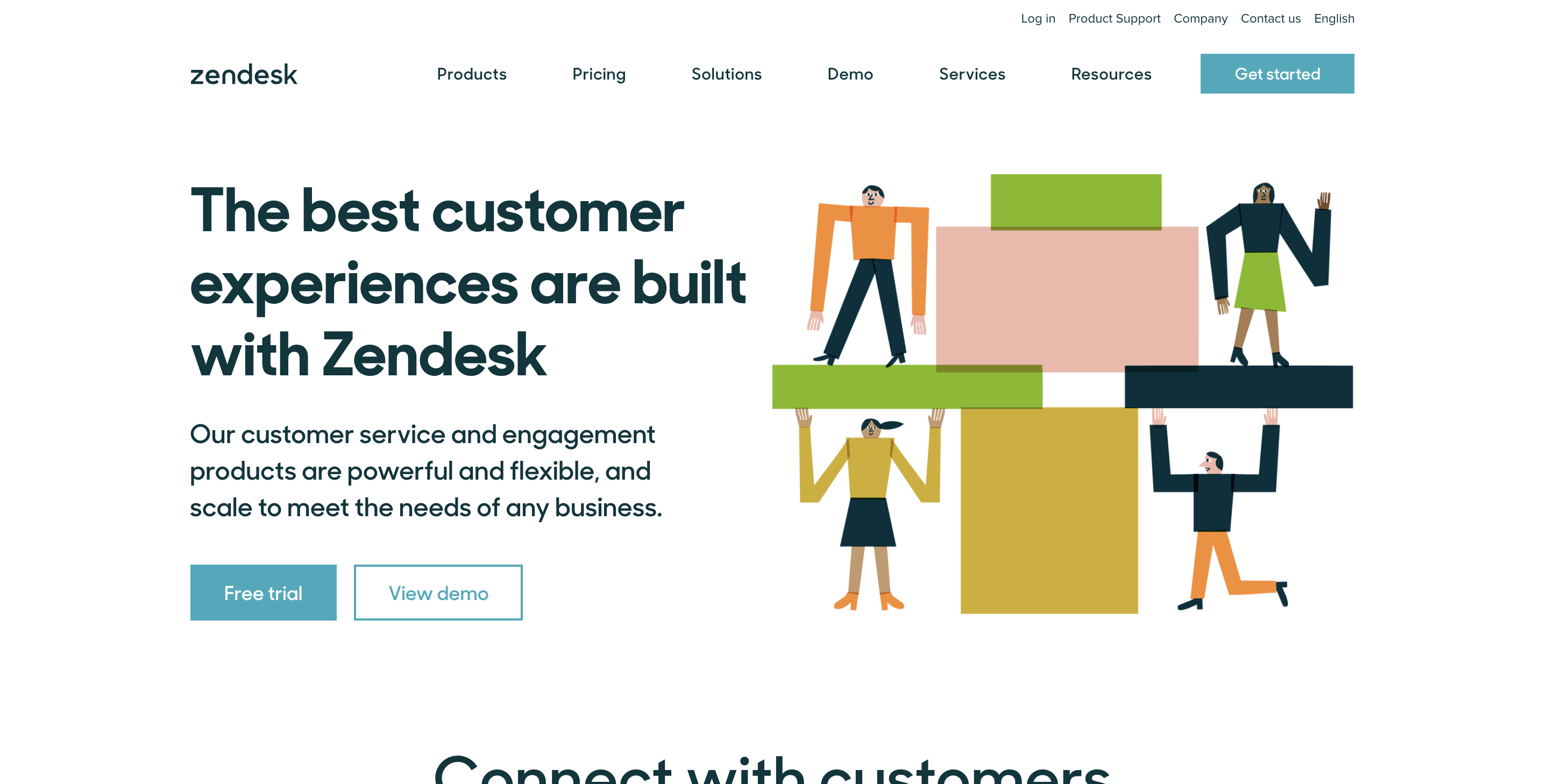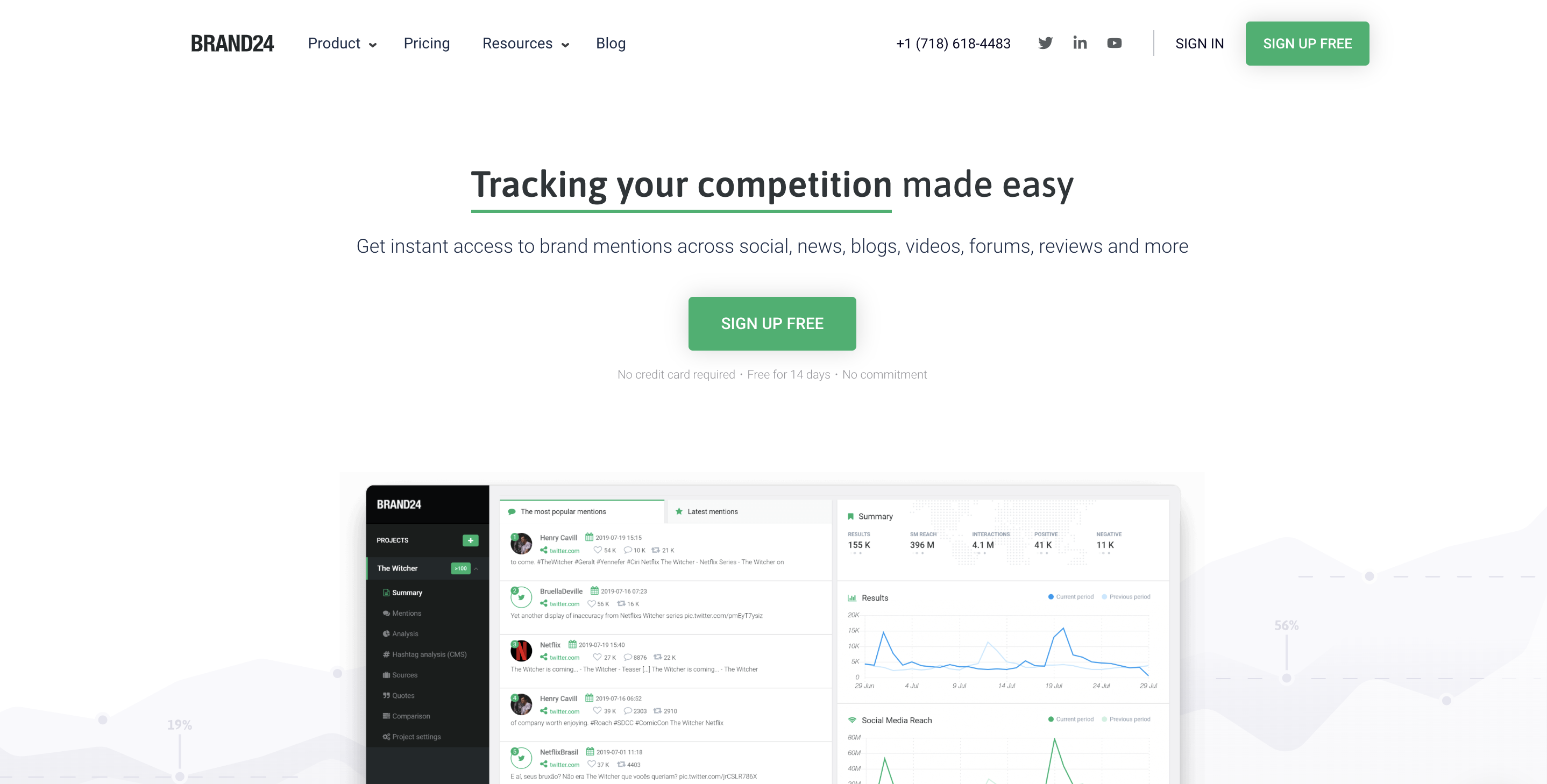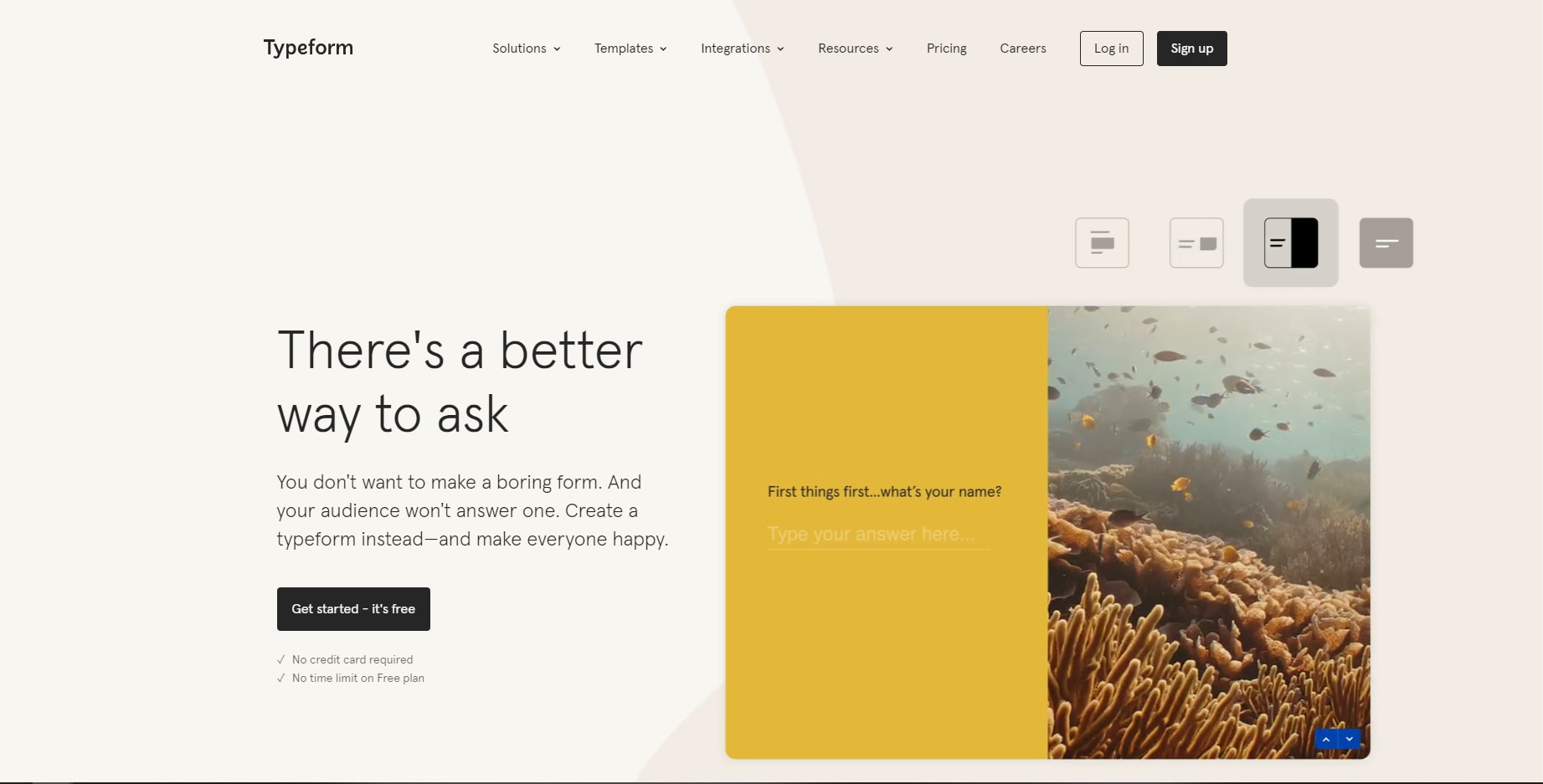6 Best Strategies To Make Your Customer Service Proactive

The idea of proactive customer service is to answer the following question.
Why cure when you can prevent?
You might have heard that before. Perhaps it was one of those elderly-eternal-knowledge sentences that piss you off but can’t be denied.
Of course, your grandma was relating to diseases and the fact that it’s much better to eat healthily and not get sick than get sick and then cure the disease with drugs.
Believe it or not, but the same rule applies to customer service.
And to rephrase your grandma’s wisdom, it would be:
Why be reactive when you can be proactive?
All companies know that their customers will stumble upon some problems (either from their own fault or your mistakes) but not all of them decide to act before such things happen.
Yet, companies who know that customer service and brand loyalty are what makes or breaks many businesses in today’s era, do not underestimate grandma’s wisdom.
If your company is or wants to be one of such, read along. This piece will serve you as a step-by-step guide on every what and how on proactive customer service.
Here’s everything you’re going to learn today.
Table of contents:
- What Is Proactive Customer Service
- Proactive Customer Service vs Reactive Customer Service
- How to switch from reactive to proactive
- Benefits of Proactive Customer Service
- Best Ways to Deliver Proactive Customer Service
- Proactive Customer Service Best Practices
- Tools to Deliver Proactive Customer Service
What is Proactive Customer Service
Proactive customer service is an approach that assumes a business is the first entity to make a move to help customers.
Usually followed, a reactive methodology is premised on the assumption that the customer seeks help either via phone or email to resolve his issues.
However, the reality shows some other effects. Modern customers are done with cookie-cutter experiences and they are looking for innovative solutions.
Proactive customer service meets these expectations perfectly. It identifies possible issues and provides customers with actionable resources that can help them resolve those problems even without them reaching out to the company.
A proactive approach may work like getting vaccinated (relevant theme, by the way), eating healthy, or studying regularly.
First will prevent you from getting sick with the diseases you would be most likely to get.
The second will prevent you from feeling bad and having a weak body which may lead to various disorders.
And the last one will help you get past the exams.
If you disobey any of the above you would either get deadly sick, ruin your body, or fail your exams. Each of these consequences would require you to later do the additional job to recover from sickness, get into proper shape, or eventually get through those painful exams.
This is the main difference between what companies usually stick to and what proactive customer support provides.
Businesses that stick to customer service principles and best practices don’t wait for their customers to get stuck with the product and strive to prevent any mistakes or blockages from happening.
Naturally, when we try to define proactive customer service we naturally compare it with more typical reactive customer service. Thus, in the next part, I’m going to show you how those two differ from each other in three main ways.
Proactive Customer Service vs Reactive Customer Service
No matter the industry, type of business, or customer base, your company most likely provides some means of reactive customer service.
Let it be the email or phone.
Each of those is great and lets customers get into contact with your customer support department. Although these solutions are must-haves, you can’t limit yourself to solely reactive customer service.
If you wonder why; Here are three main differences between proactive and reactive customer service.
Who makes the first move
In a reactive scenario, it’s your customer who first scribbles an email or makes a phone call to your company.
But that changes when you make a switch to the proactive strategy. Here, you’re the first one who reaches out to the customer to resolve his or her issue before it takes place.
This way you can provide exceptional customer service and portray your brand to be prepared for future mistakes, issues, and errors.
Later, I’ll show you how you can resolve issues in the case of customers who are to have such issues in the future. It may sound like dark magic until you apply it but believe me, there’s no easier thing that can be so impressive in the eyes of the customer!
Detect and react
Proactive customer service works well because you detect particular issues and react almost instantly. This way, your customers don’t have to go an additional mile and contact you as you’ve already provided them with a solution to their problem.
Storytime.

Still, wonder why I’m not the company’s Graphic Designer?
Imagine that company MagicRods sells advanced fishing rods that, at first glance, look like a great product. Yet, MagicRods seems to struggle to improve its sales numbers. Why is that?
The reason is simple, some may say laughable.
Namely, their fishing rods are so advanced that people don’t know how to assemble them after they unpack the whole set. Because of that, most of the customers return their purchases and the company suffers from not making enough sales.
Every sane person would quickly point out that the simplest way to resolve this problem would be to include some kind of a manual with every fishing rod they sell. But MagicRods are stubborn enough to not spend a couple of pennies on printing such materials.
You may think that this scenario is too bizarre to take place in the real world. Yet, that’s exactly what happens with various companies.
How?
Such companies know that there are reoccurring problems that their customers suffer from but do nothing to resolve the issue.
These companies wait until customers contact them to resolve the problem instead of providing resources that would help them get the thing done on their own.
Use of Customer Activity
Last but not least is the fact that companies who introduce proactive customer service constantly monitor their customers’ activity.
This means that you’re constantly on the lookout for what can go wrong. And, as you know, things will go wrong.
Sooner or later there’ll be an angry customer who, sometimes because of his own fault, will get his anger out on Twitter, Facebook, or LinkedIn.
The company that is not monitoring such activities may never discover such posts while it may cause a lot of harm.
Proactive customer service requires you to constantly monitor what your customers, prospects, and other companies share and mention in regards to your company. This way you can react on time or – as you’ll get to know later in the article – detect issues that can be fixed.
How to switch from reactive to proactive customer service
Okay, at this point, we all know the main differences between more standard, reactive customer service and a more up-to-date approach, proactive customer service.
To help you make a switch from the former to the latter, here, I’m going to lay out three, main steps to start with.
Each of them will help you become more proactive about how you help your customers and – as the result – serve both ways of customer service.
Gather feedback

Take it from the best in the field.
The first step to making your customer service proactive would be to gather feedback directly from your clients.
You might not need this if your company already does a good job when it comes to tracking reoccurring problems. If that’s not the case then you have to start asking your customers what they would like to get help with.
It might seem awkward or unprofessional to ask your own customers but, lo and behold, they will highly appreciate your effort.
Start with high-paying and long-lasting accounts. Nurturing those will help you solve problems that might help you keep big players. Then, move down the ladder and try to fix all the issues that can be fixed without your customer service agents’ direct response.
Later, I’ll explain the whole process and the best tools to make it happen. Thus, don’t worry if you don’t know how to go about gathering feedback.
Monitor customer activity
Second, proactive customer service becomes serious only when you start monitoring customer activity.
As I’ve mentioned a step earlier, gathering feedback from customers is one way to go about getting to know errors that you can fix. But you can’t do that forever and keep asking your customers each and every week.
Instead, monitor your customers’ requests, reasons they call your customer service agents, tickets they submit, and issues they stumble upon.
By being constantly on the lookout, you’ll be able to detect issues as they happen and react by creating adequate resources.
If several customers get stuck because of the same issue then you should consider investigating it and try to solve it with a proactive approach.
Create self-serving materials
The last step would be to actually create some resources you consider necessary to deliver proactive customer service.
Your customers can refer to them when they stumble upon one issue or another. The quickest and most useful way to go about such resources would be to create self-serving materials.
I bet you’ve seen knowledge bases on more than just one website. If not, check out ours!
CrazyCall Knowledge Base built using Zendesk
The knowledge base is a great type of resource, especially if your product or service is highly technical. Then, people who are not so tech-savvy will find it much easier to operate with it.
For the starter, think about basic steps your client does when first encountering your service or product. Things like creating the account, setting things up, and making the first, valuable action.
Explain those and believe me or not, some people will find it much easier to start using your offer.
This, as you’ve probably got a good idea of, will help you with user activation and getting more trial conversions. Yes, I just used two different phrases for making money.
The knowledge base is just one type of resource that you can hand to your customers and prospects to help them deal with common issues. Yet, you’ll have to upgrade it over time with more common errors and hard-to-get-through steps.
Start with self-serving materials and build your proactive customer service on that foundation.
Benefits of Proactive Customer Service
To that point, I’ve already mentioned a few benefits that implementing proactive customer service can bring to your company.
So, it’s a good moment to take a look at the crucial advantages that such an approach comes with.
Luckily, there’s plenty of benefits of such an approach, so here I’m going to focus on what you might find the most prominent.
Fewer Support Requests
No doubt this is the main benefit of proactive customer service.
More self-serve materials and proactive resources will limit the number of calls and emails your agents have to answer. Thus, it will help you limit the involvement of the workforce and take the heat off some of your employees.
This, of course, is linked to your employees’ happiness which is another crucial thing.
With fewer requests comes less stress.
Focusing on creating helpful resources and serving your customers without the need for direct contact will surely help your agents get more balance in the work. This will, again, impact their level of happiness and satisfaction, which, as a result, will impact how they serve customers.
And, of course, this action-reaction chain will result in happier and more satisfied customers. That’s why you should never forget about 2nd- and 3rd-order consequences!
Increase customer satisfaction
We’ve already touched on this, but when it comes to proactive customer service, your agents’ happiness is not the only thing that will impact customer satisfaction.
The other one – more important in this case – is the fact that customers will be able to resolve their issues without the need to contact your customer support reps.
If you do everything according to the proper standards, your proactive resources should shine with actionable and helpful tips, steps, and tutorials.
This alone shows the time spent on creating such a resource and will be highly appreciated by your customers. Also, taking your time to describe highly technical terms in a simple, day-to-day language is what some of your customers will simply love.
Here, of course, you have to take into account who encounters those problems and therefore tailor your resources to that group of people.
Put to use customer feedback
Lastly, implementing proactive customer service is a great way of utilizing all this feedback you keep getting from your prospects and customers.
I bet you get a ton (or at least some!) of mentions on social media, phone, and email requests, as well as, online reviews. Both bad and positive.
Instead of leaving all this feedback just where it is, you can pick all of these words up and make use of them.
How?
I bet you have a good idea of how at this point.
Having information is just one thing but utilizing information is one heck of another.
Don’t stop where others do. Collect all this valuable feedback and create proactive resources to answer all of these issues.
One thing is you’ll resolve some of the already occurring issues. Another is good PR that comes with listening and answering customers’ queries, reviews, and complaints.
Best Ways to Deliver Proactive Customer Service
Now that we’re well-deep into this piece, it’s time to show you the best way to deliver your brand-new, shiny proactive customer service.
There are many types of resources, as well as, ways you can go about delivering such a type of customer service. The main aspect that should always be your premise is your customer.
Think what is the best way you can resolve the most common issues in order to make your customers happy while limiting workforce involvement.
Here are some ready-to-use ways you can quickly introduce a proactive approach within your entities.
Create a knowledgebase
Another way to deliver proactive customer service that I’ve already touched on is to create a knowledge base.
This type of resource has a few perks:
- It’s easy to access
- You can update it on-the-go
- Can cover simple and complex issues
I would say that for any technical and software-based solution, a knowledge base should be the first step taken towards better customer service.
That’s because you can describe there everything from basics like setting up an account to the most advanced issues that highly technical engineers would only want to tackle.
Also, thanks to various software you don’t have to create a knowledge base solely on your own, but rather build it like your own FAQ blog. You can check our knowledge base for reference. There you’ll see how we cover issues starting from basics like getting started with our software all the way to setting up QoS.
Announce mistakes asap
Implementing proactive customer service means that you put your customers’ concerns first. That being said, you should make your best to be the first to react when it’s actually you who screws up.
The best way to deal with any failure is to announce it right away.
Of course, I do not encourage you to panic over some minor issues. What I’m trying to convey is that you shouldn’t wait until it’s your clients who reach out to you looking for an answer.
Instead, use channels such as your website and social media to announce errors, glitches, and defects that may affect your users’ experience.
This is also the best way to make your brand antifragile. If you’re not familiar with the term, it was coined and developed by Nassim Taleb in his book Antifragile.
In its core, antifragile means that a particular thing becomes stronger as the volatility increases.
“Some things benefit from shocks; they thrive and grow when exposed to volatility, randomness, disorder, and stressors and love adventure , risk, and uncertainty.” – Antifragile: Things That Gain from Disorder
Most things, people, and brands are fragile and the increasing volatility causes damage to it. Nassim oftentimes refers to the coffee cup which is fragile and its best and safest state is when it simply lays on the counter. Whenever you pick it up or expose it to vibrations its safety decreases.
So, how can a brand become antifragile?
And how can it use mistake announcements to achieve it?
Take a look at how KFC dealt with a chicken shortage that made them close around 700 joints in the UK.

Instead of standard blah, blah, blah KFC used its own mistakes, highlighted them, and made fun of itself.
Now, that’s the complete opposite of what the majority of brands do. You just can’t beat such a PR move.
Harry Dry from MarketingExamples.com made a whole case study on how brands can become antifragile through exposing and announcing their own flaws, including above mentioned KFC case and another of Lewis Capaldi mocking the Oasis legend Noel Gallagher. I highly recommend you check it out.
Survey your customers
One of the best ways to make your customer proactive is to ask them directly about those issues.
This is how you can discover and, later on, fix issues that your customers encounter.
Here, the easiest way would be to survey all of them.
While direct contact like back-to-back emails or a phone call might be better in terms of high-paying accounts it won’t be doable in the case of every customer.
Plus, you want to discover issues on all levels of engagement. But as you know, new customers won’t be keen to have an hour-long convo with you.
This leaves us with surveys that are easy to send and – more importantly – easy to go through.
Put clarity as to the main premise when creating a survey. Make answers obvious, without space for wondering. Take some time beforehand and analyze what issues you think are likely to be discovered.
If your survey takes less than 5 times to take and you market it properly (will help fix their issues faster) you should see no other than positive results.
Send email newsletters
Any business that has an email list should utilize it to provide proactive customer service.
Besides standard emails containing discount codes, announcements, and occasional changes you should also send email newsletters containing information about such things as the latest fixes, newly released features, and unexpected errors.
Email is a great way to announce something directly to your customers. And if you don’t know what type of emails to send, here are some newsletter ideas for your inspiration.
While social media may have a broader reach with options like sharing and liking a post, email gets delivered directly to the expected recipient.
Thus, if there’s a mistake or failure that your customers should know about, use an email newsletter as a way to inform them.
Also, if you send weekly or monthly digests consider adding a section where you quickly go through what you’ve fixed in recent days.
This may seem counterintuitive but again, it’s a way to make your brand antifragile. Basically, you’re saying: “We know that we’re not perfect, but take a look at this. We’re not hiding anything and you can be sure that when things go wrong we’ll do our best to fix it asap!”.
Monitor your social media
Last, but not least way to improve proactive customer service is the usage of the earlier mentioned social media.
You can do it in two ways. First for the research and second for announcements.
When it comes to the former – you can go through messages you get from upset clients, bad reviews, and various posts on your brand. This will help you discover issues that you should address (if possible).
Of course, you should also respond to those queries but that’s the reactive part of your customer service approach.
The second way to use your social media channels is to announce any mistakes, errors, and faults. This way you’ll let know the broad audience that they can expect some type of malfunction.
You’ve probably encountered not once or twice how bad it looks when the brand’s Facebook profile burns with posts asking what’s going on and why their service is not working as it should (think Internet providers).

You certainly don’t want such a type of PR.
Also, do not limit yourself to platforms such as Facebook, Twitter, or Instagram.
Utilize region- and topic-specific forums and narrow communities on platforms such as Slack or Telegram. All in all, you want to reach everyone who might be affected by these inconveniences.
Begin a loyalty program
While it may sound far from proactive customer service and be more of a B2C method you can successfully implement it in the B2B industry as well.
One of the main pros of loyalty programs is the fact that they help you increase the LTV of your customers. And this makes them even more try-worthy in the case of B2B companies.
No matter what industry you operate in and who does your product serve, think about how you can make their journey more pleasant.
Offer things like discounts, special bundles, and free resources when your customers interact with your brand or product.
This will show them that there’s a living person behind the product they use and that your company is ready to help and able to interact.
Proactive Customer Service Best Practices
Let’s take a look at a few of the main principles of proper proactive customer service.
Now that you know how to go about delivering such customer service and why you should even consider doing so, I’ll briefly go through what you can (or rather should) do to make your own skyrocket.
Assemble a dedicated team
The first thing you can do to assure the quality of your proactive customer service is to set a dedicated team responsible for creating content and constantly monitoring the current situation.
Such a team can take on tasks such as:
- Creating resources
- Surveying customers
- Monitoring social media
- Creating email newsletters
Being focused on a specific task will help them do a better job than if they had to handle all the usual customer service-related tasks.
You can, of course, make a team that is responsible for both reactive and proactive customer service but be sure to balance both. Don’t just assign all the possible tasks. This will create pushback from a dedicated team to regular customer service agents.
Make proactive customer service a habit
Nowadays customer service is a must-have.
If your company doesn’t satisfy customers’ needs they’ll quickly switch to one of your competitors. And believe me, your offer is not non-replaceable even if your homepage says you revolutionize the industry.
Thus, you have to double down on your customer service and make it one of the core features of your offer.
The best way to make it happen is to make customer service a habit. It’s not an easy thing to do, but at the same time, there’s nothing more effective.
As with any habit, first, you have to stress and explain its importance and value. No one will put in the necessary work unless they see why it’s worth the effort. Unless you stick a gun to their heads…
Don’t just tell your agents that the customer is the most important entity.
Teach them why customer service is the crucial matter, equip them with resources and tools necessary for their tasks, and sooner or later, they won’t need any of your reasoning.
After successful deployment, monitor your efforts and optimize it as you move forward.
That is the best way to make proactive customer service a habit.
Contact your customers
Do you know why the phone and meetings are not dead?
It’s because people crave human connection. After all, we feel best inside some type of communities (yes introverts, you too) and thus we want to be around other people.
That’s why you can’t boil everything down to chatbot or autoresponder. And that’s also why you should show your customers why you care by going the extra mile and making an effort to contact them directly.
As I’ve mentioned before you should focus especially on contacting key accounts and taking some time to cover all their needs. Be flexible when it comes to scheduling calls and meetings and show that it’s being done with their interest in mind.
Remember that proactive customer service is all about the premise that it’s you who reaches out first. Thus, don’t wait until a major error happens so you try to clean up the mess with friendly phone calls and meetings.
Start nurturing your customers now so they won’t leave you during the bad times.
Wonder how you can kill two birds with one stone?
You can use Channels to provide both reactive and proactive customer service!
How:
One way is to build a helpline so your customers and prospects can reach out to your company whenever they need to.
Another is by reaching out to high-value accounts using our Click-To-Call widget.
In other words, you can build a reliable helpline and have outbound calling software at the same time!
If you’d like to test it out, now you can become a user for free for 7 days. During that time you’ll get full access to our software and a free phone number with a $1 to fully test it out.
Tools to Deliver Proactive Customer Service
Throughout the article, you’ve read that you should use resources like a knowledge base, surveys, or email newsletters.
All of the above is much easier to make when you have proper tools in your equipment. Thus, below you’ll find a brief list of tools and software that should help you with delivering proactive customer service.
Zendesk

By now, you know that the best way to go about self-serve resources is to create a knowledge base.
And the best way to go about creating such a knowledge base is by choosing Zendesk as a tool.
Using Zendesk you can create a neatly organized knowledge base that will serve new customers, prospects, as well as, experts who might want to tackle advanced issues on their own.
Again for the reference and to see how a knowledge base built using Zendesk may look like, check out Channels’ KB.
Brand24

Monitoring social media is a crucial aspect of delivering proactive customer service. Yet, it’s hard if not impossible to manually keep up with all the mentions, posts, reviews, and articles that cover or mention your brand.
Thus, it’s much better to let the software do the work and monitor the whole web for us.
One of such tools is Brand24.
It lets you set certain keywords, websites, and phrases and their constantly crawling software will make sure to notify you whenever someone mentions those trigger terms.
This will save you a tone of time and unfound mentions. Plus, because it’s not limited to just a few platforms, it will help you find mentions on blogs and forums that you wouldn’t normally check.
Typeform

The main problem with surveys is that they can easily turn messy. You add a few questions here and there and while everything seems logical to you, it won’t be the same when your recipients see it.
Thus, when creating a survey, simplicity and clarity should be the principles to keep in mind. Just like with customer service!
That’s why I’d recommend you use Typeform when creating your surveys.
Typeform’s main power is simplicity. What a person who takes the survey sees is one question at a time. No messy interface, no buttons overload, just what he has to focus on at the moment.
Also, the main reason why most people opt-out from the survey and decide not to finish it is that there seems to be no end. Typeform surveys include a progress bar that shows how much is left in the survey. This will assure the majority of people who start actually finish.
Altogether it’s a great software to build surveys with and you should see a better completion rate making your surveys using it!
Wrap up!
Now that everything has been said and done, the most important thing to remember is that proactive customer service is all about you reaching out first.
All the other things – software, tools, and best practices are there to help you deliver such customer service but without this premise in mind, you won’t succeed.
Thus, be customer-centric and focus on it because it brings value, not because others do it.
Start making a switch from solely reactive customer service but don’t forget that both are necessary. Here, the balance is the answer.
Train your agents, experiment with various ways of implementation, stick to the best practices and equip your team with proper tools. At this point, you’re ready for success!



